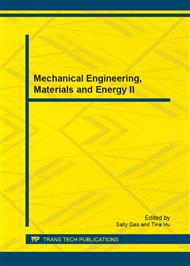p.585
p.589
p.593
p.597
p.603
p.607
p.615
p.620
p.624
Analysis of Effects of High Temperature and Shear Stress on Asphalt Binder
Abstract:
The objective of this study is to analyze and determine the features of asphalt binder under the simultaneous effect of high temperature and shear stress. Based on the theory of viscoelasticity, the dynamic shear rheology test is used as study method. Meanwhile, study subjects are AH70 asphalt, SBS modified asphalt and MAC modified asphalt. Study objective is to analyze the effects of both high temperature and loading frequency on asphalt binder in asphalt mixture. The result shows that temperature increases have great influence on asphalt binder, which are shown by the variation of parameters quickly decrease. Asphalt binder is mainly influenced by temperature changes while changes in shear stress take very little effect on asphalt binder properties like complex modulus, complex viscosity as well as rutting resistance parameter.
Info:
Periodical:
Pages:
603-606
Citation:
Online since:
January 2013
Authors:
Price:
Сopyright:
© 2013 Trans Tech Publications Ltd. All Rights Reserved
Share:
Citation:


